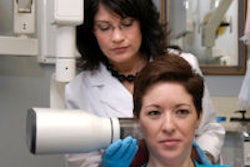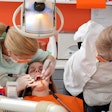This week, March 1-7, is Dental Assistant Recognition Week (DARW). This year's theme, according to the American Dental Assistants Association (ADAA) is "Embracing the Changes in the Profession," which plays at the changes within the entire dentistry community and acknowledges the growing responsibilities or dental assistants.
Dental assistants have been around since the early days of dentistry to manage the office and help dentists chairside. Unlike most professions, dental assistant work was largely founded and revolutionized by women. The first dental assistants were even known as "Ladies in Attendance."
Malvina Cueria is considered the first dental assistant when she was hired in 1885 to be "quick, quiet, gentle, and attentive," according to Westwood College. Her role made it possible for women to begin working in the dental profession and run certain clinical aspects without male supervision, which was a revolutionary concept in the late 1800s.
Into the 20th century, women continued to innovate the role of the dental assistant. Juliette Southard founded the ADAA, the first national dental assistants society, in the early 1920s. She and Jessie Ellsworth, who was the president of the Chicago & Cook County Dental Assistants Association at the time, also petitioned to attend the 1923 ADA convention, establishing the precedent of women assistants attending dental conventions. Since 1950, dental visits have increased 85.6%, according to an article in the Journal of Dental Education, and assistants' roles have likewise expanded.
The growth of the profession is projected to continue throughout this year and beyond as dental assistants enter a renaissance period. In 2012 it was named the best job for young people by Forbes, and the Bureau of Labor Statistics expects employment for dental assistants to grow by 25% from 2012 to 2022.



















